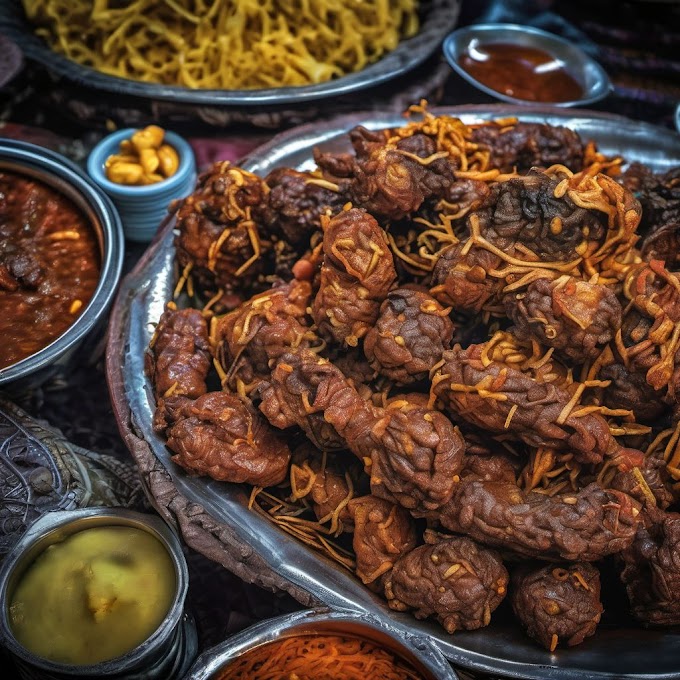Rasgulla is a popular dessert originating from the eastern Indian state of Odisha. It is made from chenna (curdled milk) and dipped in sugar syrup. Tipically round, spongy, and white in color. The texture of Rasgulla is similar to that of a cake or cheesecake, but is much lighter and fluffier.
To make Rasgulla, milk is first boiled and then curdled with a mild acidic agent, such as lemon juice or vinegar. The resulting solid curds are then strained and kneaded, forming a smooth and pliable dough-like mixture known as chenna. These chenna balls are then boiled in a sugar syrup until they puff up and become spongy.
Rasgulla is traditionally served cold, often with more syrup drizzled on top. It is a popular dessert across India, and is enjoyed during festivals and special occasions.
Indian Rasgulla Dessert Recipe
Ingredients:
For the Rasgulla:
- 1 liter full-fat milk
- 1 tablespoon lemon juice
- 3 cups of water
- 1 1/2 cup sugar
- 1 teaspoon rosewater
- A pinch of crushed cardamom
- Few saffron strands
- A few drops of lemon juice
Instructions:
1. Heat the milk on medium heat in a saucepan until it comes to a boil.
2. Once the milk comes to a boil, reduce the heat and add the lemon juice.
3. The milk will start to curdle and the whey will separate. This is the chenna.
4. Turn off the heat and let the chenna sit for a few minutes to cool.
5. Now, strain the chenna through a cheesecloth or muslin cloth.
6. Rinse the chenna under cold running water to remove any sourness.
7. Squeeze out the excess water from the cloth and hang it for around 30 minutes to drain out any remaining water.
8. Knead the chenna for 5-7 minutes until it becomes smooth.
9. Divide the chenna mixture into small bite-sized balls.
10. In a separate pot, add sugar, cardamom, and water and bring it to a boil.
11. Once the sugar dissolves, add the saffron, rose water, and a few drops of lemon juice to the syrup.
12. Now add the chenna balls to the syrup and let it cook for around 15-20 minutes on medium heat.
13. Remove from heat and let it cool.
14. Rasgulla is ready to serve. Serve it chilled or at room temperature.
Enjoy the delicious, melt-in-your-mouth Rasgulla with your loved ones!
Variations of Rasgulla
1. Chocolate Rasgulla: Add cocoa powder to the chenna mixture to make chocolate-flavored Rasgulla. Serve it with chocolate sauce for a delicious dessert.
2. Mango Rasgulla: Mix mango puree into the syrup to make Mango Rasgulla. This is a perfect dessert for the summer season.
3. Cardamom Rasgulla: Add extra ground cardamom to the syrup for a more aromatic flavor. This will give the Rasgulla a unique and flavorful taste.
4. Rose Rasgulla: Add more rosewater to the syrup, and garnish with dried rose petals. This variation will give the Rasgulla a fragrant and floral flavor.
5. Coconut Rasgulla: Roll the Rasgulla in grated coconut before serving. This will give the dessert a slightly nutty flavor, and add a subtle crunch to every bite.
Try any of these variations to give your Rasgulla an exciting twist, and excite your taste buds with delicious, new flavors.
Healthy Benefits of Rasgulla
Rasgulla is a dessert that can be enjoyed in moderation as part of a healthy diet. Some of the potential health benefits of Rasgulla include:
1. Rich in protein: Rasgulla is made from chenna (curdled milk), which is a good source of protein. Protein is important for building and repairing tissue in the body.
2. Low in fat: Rasgulla is a low-fat dessert option, as it does not contain any added fat. This makes it a healthier option than other high-fat desserts.
3. High in calcium: As Rasgulla is made from milk, it is a good source of calcium. Calcium is important for building and maintaining strong bones and teeth.
4. Boosts energy levels: Rasgulla contains sugar, which can provide a quick energy boost when consumed in moderation.
However, it is important to keep in mind that Rasgulla is still a dessert, and should be consumed in moderation as part of a healthy diet. Excessive sugar consumption can lead to health problems, such as weight gain, tooth decay, and increased risk of diabetes and heart disease.






%20(1).png)

